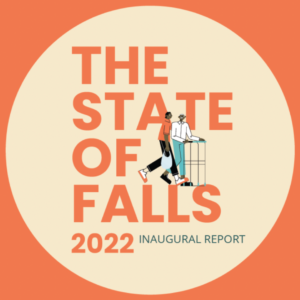Data analytics: Marrying compliance and strategy
Accountability is no longer just a buzzword. All parties in the care chain are being asked to improve quality and share care data beyond their own walls, and the Centers for Medicare & Medicaid Services (CMS) intends to make bridging the data gaps between hospitals and long-term/post-acute care (LTPAC) facilities a regulatory responsibility soon.
Meanwhile, the LTPAC landscape has changed a lot since the previous decade: Residents are entering facilities later in life, acuity levels are rising, and baby boomer consumer expectations are about to surge through the roof. How does all this affect care delivery and a facility’s bottom line? Enter the new generation of data analytics technology.
THE NEW ROLES OF DATA ANALYTICS
Of all the LTPAC segments, nursing homes have the most data, the most standardized assessments and the most complex regulations, says Steven Littlehale,MS, GCNS-BC, chief clinical officer and executive vice president of PointRight, a predictive analytics software provider for the healthcare industry. “Yet, we’ve done relatively little to assess or utilize the information we collect.”
 Under the “transitions of care” initiatives, that data will be valuable in curbing all kinds of negative things, including hospital readmissions, once the data are (1) electronic and (2) sharable. The trick, Littlehale says, is to welcome the data the LTPAC caregivers are already gathering while finding new ways to use data to benefit the residents’ health, the organization’s business relationships with local hospitals and the facility’s financial bottom line. Data analytics technology can help with both tasks.
Under the “transitions of care” initiatives, that data will be valuable in curbing all kinds of negative things, including hospital readmissions, once the data are (1) electronic and (2) sharable. The trick, Littlehale says, is to welcome the data the LTPAC caregivers are already gathering while finding new ways to use data to benefit the residents’ health, the organization’s business relationships with local hospitals and the facility’s financial bottom line. Data analytics technology can help with both tasks.
In-house data analytics involves taking a facility’s collected data and examining it for any patterns, red flags or hidden opportunities. In the past, the analytics process was usually initiated by the organization’s finance office. The data-crunching reports were generated within its IT department and rendered as a scorecard report for the executives. Caregivers rarely heard about the impacts of the clinical and behavioral data they gathered daily, unless the outcomes were poor, that is.
“Outcomes reporting is the tip of the iceberg,” says Teresa Chase, president and CEO of American HealthTech, a provider of business operations software for LTPAC organizations. “But it’s just Generation One of analytics.”
Today’s analytics software can reach deeper across the facility to provide near-real-time results reporting. Properly employed, analytics software can catch MDS coding errors before the file is submitted, show leakages in the facility’s cost system and even provide some clinical decision-support alerts on resident care while there’s still time to do something about it.
In short, today’s analytics aren’t just for quarterly outcomes reports anymore. Now, it’s all about moving toward proactive responses to gathered data, instead of reactive ones. The proficient use of data analytics will be affecting all of these facility aspects, either now or in the near future:
FINANCIALS
Data analytics systems were originally designed to assess the positive and negative impacts of the facility’s core business and service lines, and they are still best known for that role. Now, data analytics can analyze anything from coding compliance to equipment use, and from supply purchasing history to liability costs.
As finance and operations blend together, data analytics systems are also being used to manage one of the organization’s most crucial financial aspects–its staff. Some systems can track staff skill sets and recalculate staffing needs as the resident case mix changes. “You can change your staffing models, or you can look to technology to empower the staff you already have,” says Jim Pursley, general manager of Independent Living, Intel-GE Care Innovations, which offers technology solutions for LTPAC and senior independent living.
SAFETY/RISK MANAGEMENT
Today’s LTPAC environment involves a complex balance of care delivery and documentation, among other factors. Analyzing the facility’s daily data can show where the organization can improve patient safety and close the risk holes.
With fall management and resident wandering high on LTPAC’s concern list, data analytics can be combined with motion sensors and behavior-based analytics technology inside a resident’s apartment to detect significant changes in resident movement patterns. Multifeatured pressure-sensitive pads are already on the market that can be placed on a bed or wheelchair to monitor for changes in positioning. Although originally designed to alert caregivers to a resident attempting to leave a bed or chair, some pads can detect incontinence, potential pressure spots and other things.
Some analytics-based room sensors can discern (via data gathered over a week or so) that a specific resident rarely gets out of bed during the night, establishing a “routine pattern of behavior.” If that resident later begins to get out of bed six times a night to use the bathroom, it could mean the onset of a urinary tract infection (UTI), an illness that can be treated easily if caught early.
“UTIs are a huge cause of disorientation and falls, and there are symptoms that present days before,” Care Innovation’s Pursley explains. “But once the resident falls and breaks a hip, or is on the floor with a 104° fever, you can only do so much. You’ve missed the opportunity to get ahead of emergencies before they occur.”
Video-based analytics are about to be added to the data pile, further blurring the lines between safety monitoring and clinical care, says Larry Triplett, marketing manager and co-founder of Cerner Resource Systems, a provider of LTC data collection and automation systems. “In the next three to five years, I think we’ll see video analytics that can identify what’s going on in the room and document it,” he says. “Then the caregivers don’t have to spend half their shift documenting things.” Unlike a video camera, these sensors don’t capture images for playback, he adds. Instead, they gather motion data to establish the resident’s normal routine and then monitor for changes in behavior patterns.
Watch this category closely over the next year, experts say; vendors from the data analytics and sensor technology markets are being nudged beyond their comfort zones by a LTPAC provider industry that needs deep features in its fall management, wander management and behavior monitoring tools to ensure the physical safety and proactive clinical care of its residents.
CLINICAL DECISION SUPPORT
Data analytics of clinical information involves data that is gathered by caregivers (and sometimes the residents) and added to the database. What’s different is how fast the data is analyzed, and therefore acted upon. Most in the industry agree that what LTPAC needs next is more clinical decision support sooner rather than later.
Telemedicine is ripe to become the next component added to data analytics and clinical support. For example, a device has been developed that can link a remote neurologist to a stroke victim’s side, and can facilitate a clinical decision on the type of stroke so the proper intervention can take place much more quickly.
B2B RELATIONSHIPS
Data analytics is going to play a greater role in LTPAC’s business relationships, too. Rating systems such as CMS’ Five-Star Quality Choice program are only half the story. New tools are being developed that can drill down to performance data on specific health conditions or specific comorbidity combinations.
“Skilled nursing facilities need to use their data to justify their role in the healthcare continuum,” PointRight’s Littlehale says. “There’s such a movement right now to push people to lesser-care and cheaper-care environments. We’ve never really used the data to demonstrate how much of an impact we have on positive outcomes.”
The next step beyond data analytics is predictive modeling, where the patterns found in the data are extrapolated into the future. Littlehale says PointRight is beta-testing a hospital discharge planner tool that will use data modeling to predict the probability of a specific patient becoming a readmission, based on the patient’s disease, comorbidities and other risk factors.
Then, the tool can use predictive analytics to assess the readmission likelihood at local nursing homes. Comparing the two sets of data can help hospitals place patients in the best LTPAC facility for the conditions and risks at hand. “So, if hospital A is discharging a patient with a 20 percent likelihood of bouncing back as a readmit, it can look at surrounding nursing homes with available beds, and see how that risk will be mitigated based on what the SNF facility’s historical performance has been for that specific patient type,” he says. From an IT standpoint, it’s predictive modeling; but from the facility viewpoint, it’s risk management.
The idea is interesting, but it can help or sting in both directions. LTPAC facilities should be using data analytics tools to tailor their own resident mixes, too, Littlehale says. “People should be asking, ‘What kind of resident mix do I want to try to attract in order to be financially successful?’ That has cost and competency implications as well, since the residents that pay the most also cost the most to provide care to.”
That same data can be used to reveal the gluts and needs within the local markets. There’s little point creating or increasing a certain service line if the local hospitals don’t have a need for it. “If the SNF assessed its competencies and its expected reimbursements first, it could make data-driven decisions on whether to enhance those areas or on build competencies in another space,” Littlehale adds. “It’s a much better way of approaching it than just chasing the big dollar.”
TRANSITIONS OF CARE
One of the hottest topics–and biggest concerns of CMS–is how to improve transitions of care. Data analytics can be used to track care data in and out of the LTPAC facility, and eventually across the entire care chain.
“Traditionally, long-term care facilities have operated pretty much in their own little silos,” Cerner Resource Systems’ Triplett says. “With the new regulations for electronic medical records and the new responsibilities of accountable care organizations, we’re going to see a huge swing toward IT systems that can transition easily across venues.”
Data analytics also comes into play with the emphasis on home- and community-based care, American HealthTech’s Chase adds. Seniors will be moving among multiple provider sites, while data pours in via wireless platforms, portable health monitors and mobile testing devices.
“We have to start with some sort of tool that we can pass across the continuum as we make our transitions, especially with the emphasis on home and community-based care,” Chase says.
LTPAC’s future will contain even more convergence among data analytics, clinical care and documentation. Once caregivers can see, through real-time analytics, that their observations and decisions have made an impact on a resident’s care, caregiver engagement tends to skyrocket, Triplett says. “Once they knew the data was really being used, it caused a huge jump in their data entry compliance.”

Pamela Tabar was editor-in-chief of I Advance Senior Care from 2013-2018. She has worked as a writer and editor for healthcare business media since 1998, including as News Editor of Healthcare Informatics. She has a master’s degree in journalism from Kent State University and a master’s degree in English from the University of York, England.
Related Articles
Topics: Articles , Technology & IT











